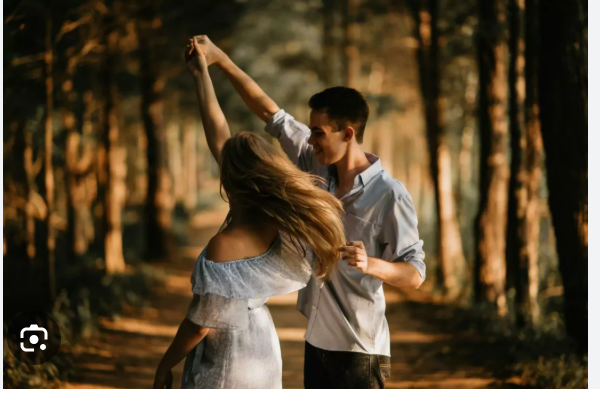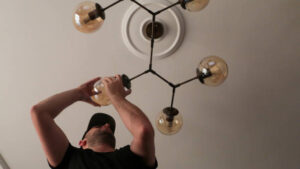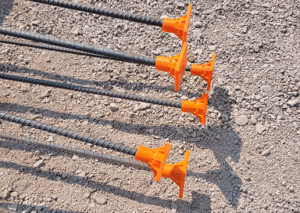
Dating has changed dramatically over the last decade. While swiping right on dating apps has become the norm for finding a partner, many people feel fatigued by the endless scrolling, ghosting, and superficial connections. This digital burnout has led to a resurgence of an older, more direct way of meeting people: speed dating.
For those tired of judging potential partners based on a curated profile, speed dating offers a refreshing alternative. It’s a face-to-face experience where you can gauge chemistry and personality in a way that a screen simply can’t capture. The idea is to have several short, timed conversations with different people, giving you a quick impression of each person.
This post will explore the world of speed dating, comparing it to the experience of using modern dating apps. We’ll look at the pros and cons of this fast-paced approach to finding a connection and offer tips on how to make the most of a speed dating event. If you’re looking for a more authentic and efficient way to meet someone, you might find that this classic method is exactly what you need.
What Is Speed Dating?
Speed dating is a structured matchmaking event designed to help single people meet multiple potential partners in a short amount of time. The format is simple: a group of participants gathers at a venue, usually a bar or café. The group is typically split by gender, with one group (often the women) staying seated while the other group (often the men) rotates from table to table.
Each “date” lasts for a predetermined amount of time, usually between three and eight minutes. When the time is up, a bell or buzzer sounds, and the rotating group moves to the next person. Participants are given a scorecard or a way to discreetly note who they’d like to see again. At the end of the event, they submit their choices to the organizers. If two people have both indicated a mutual interest, the organizers share their contact information, and they can arrange a proper date.
The concept was invented in the late 1990s by a rabbi in Los Angeles as a way to help Jewish singles meet and marry. It quickly gained mainstream popularity for its efficiency and no-pressure environment. It provides a structured, safe, and fun way to meet new people without the awkwardness of approaching a stranger at a bar or the uncertainty of online interactions.
Speed Dating vs. Dating Apps: A Modern Dilemma
The rise of dating apps like Tinder, Bumble, and Hinge has revolutionized how people find partners. These platforms offer a vast pool of potential matches at your fingertips, but they also come with a unique set of challenges. Let’s compare the experience of speed dating with that of using dating apps.
The Illusion of Choice
Dating apps present what seems like an infinite number of options. While this might sound like a good thing, it often leads to “choice paralysis.” With so many profiles to swipe through, it can be difficult to commit to one person, as there’s always a feeling that someone better might be just a swipe away. This can foster a culture of disposability, where people are quick to move on rather than investing time in getting to know someone.
Speed dating, on the other hand, offers a finite, manageable number of interactions in one evening. You meet a specific group of people, which forces you to be more present and engaged with each person. This limited selection can actually make it easier to form a genuine connection, as you’re focused on the people right in front of you rather than an endless digital catalog.
Authenticity and First Impressions
One of the biggest criticisms of dating apps is the curated nature of profiles. People present the best versions of themselves through carefully selected photos and witty bios. This can create unrealistic expectations and lead to disappointment when you meet in person and reality doesn’t match the profile. There’s also the risk of catfishing, where someone uses a fake identity altogether.
Speed dating is all about real, in-person interaction. You get an immediate sense of someone’s personality, their mannerisms, and their sense of humor. You can gauge physical chemistry and see how they carry a conversation—things that are impossible to determine from a digital profile. A first impression made face-to-face is often more authentic and reliable than one formed through a screen.
Time and Efficiency
Dating apps can be incredibly time-consuming. The process involves swiping, matching, messaging back and forth, and then finally arranging a date that may or may not happen. Many conversations fizzle out, and the time spent on the app doesn’t always translate into actual dates.
Speed dating is designed for efficiency. In a single evening, you can meet anywhere from 10 to 20 people. You skip the tedious back-and-forth messaging and get straight to the point: an in-person conversation. This format respects your time and quickly helps you identify people you have a genuine spark with.
The Rejection Factor
Rejection is a part of dating, no matter the format. On dating apps, it often comes in the form of being unmatched or ghosted, which can feel impersonal and confusing. The lack of closure can be frustrating and damaging to one’s self-esteem.
In speed dating, rejection is handled more discreetly. You simply don’t mark someone on your card, and they’ll never know unless you tell them. If there’s no mutual match, you don’t receive their contact information. This process is much gentler and less direct, making it easier to handle the inevitable reality that not everyone will be a match.
Tips for a Successful Speed Dating Experience
If you’re ready to give speed dating a try, a little preparation can go a long way. Here are some tips to help you make the most of the event and increase your chances of finding a connection.
Prepare Some Conversation Starters
With only a few minutes for each date, you won’t have time for awkward silences. Think of a few open-ended questions beforehand to get the conversation flowing. Avoid generic questions like “What do you do for work?” Instead, try something more engaging:
- “What’s something you’re really passionate about?”
- “What’s the best trip you’ve ever taken?”
- “If you could have any superpower, what would it be and why?”
- “What’s a skill you’d love to learn?”
Dress to Impress (and to Be Comfortable)
First impressions matter, so wear something that makes you feel confident and reflects your personality. Aim for a smart-casual look—something you’d wear on a first date. It’s also important to be comfortable, as you’ll be sitting and talking for a couple of hours. When you feel good in what you’re wearing, your confidence will shine through.
Be Open-Minded
Go into the event with an open mind and a positive attitude. Don’t have a rigid checklist of what you’re looking for in a partner. You might be surprised by who you connect with. The purpose of speed dating is to meet a variety of people, so be open to talking to everyone, even if they aren’t your usual “type.”
Listen Actively
A good conversation is a two-way street. Don’t just spend your time talking about yourself; make an effort to actively listen to what the other person is saying. Show genuine interest by asking follow-up questions and making eye contact. People are more likely to be interested in you if they feel heard and understood.
Don’t Be Afraid to Be Yourself
Authenticity is attractive. Trying to be someone you’re not is exhausting and rarely leads to a genuine connection. Let your personality shine through. Share your hobbies, tell a funny story, and don’t be afraid to be a little quirky. The right person will appreciate you for who you are.
Finding Your Match in the Modern World
While dating apps have their place and have helped countless people find love, they are not the only option. The return of speed dating highlights a growing desire for more authentic, face-to-face connections. It offers a structured, efficient, and fun way to meet new people without the digital fatigue that often comes with online dating.
If you’re tired of swiping and ready for a different approach, consider signing up for a speed dating event in your area. It might feel a little old-fashioned, but the timeless appeal of a real conversation and an immediate spark is something that technology can’t quite replicate. You might just find that stepping away from the screen is the best way to find what you’ve been looking for.

